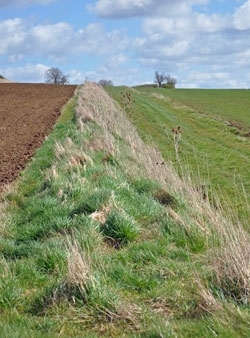 Re-create the patchwork quilt. Whatever the agronomic benefits, for wildlife, one of the worst aspects of modern agriculture is farming in blocks. The farm divided into blocks of cropping with no variation of wildlife areas is not good for game or other wildlife.
Re-create the patchwork quilt. Whatever the agronomic benefits, for wildlife, one of the worst aspects of modern agriculture is farming in blocks. The farm divided into blocks of cropping with no variation of wildlife areas is not good for game or other wildlife.
Animals like to have a variety of habitats within easy reach and block farming can prevent this. A hare likes about eight different fields in the course of the year: young wheat in winter, spring barley in April, grass ley and pastures in the summer, oilseed rape in the autumn - along with catch crops like turnip and mustard.
Old-fashioned rotations produced a patchwork quilt, which is ideal. It is not always practical to abandon the big block system, but you can improve this approach by utilising awkward corners and unproductive strips to create more of a patchwork. Some ideas that will also support CFE are:
- Retain some overwinter stubbles (VM15). Cereal stubbles are best and, if you hand sow in some patches of mustard, it will provide good game cover as well.
- Widen the field boundaries either with strips of tussocky grass or with strips of wild bird seed mixture (VM10) sown as brood rearing cover.
- Small blocks of wild bird seed mixture (VM10) can be sown with winter cover crops (VM5).
- Take out the awkward field corners (VM17) - each one is a potential home for a brood of pheasants or partridge.
- Some small patches of the pollen and nectar flower mixture (VM7) or wildflower areas (VM6) will also help to improve the patchwork. Hares will love the legumes in these, but remember they are designed to help bees, hoverflies and some butterflies. They won't supply the insects or the cover that young game chicks need.
Please refer to our pages on Countryside Stewardship for up-to-date information on the current agri-environment scheme in England.